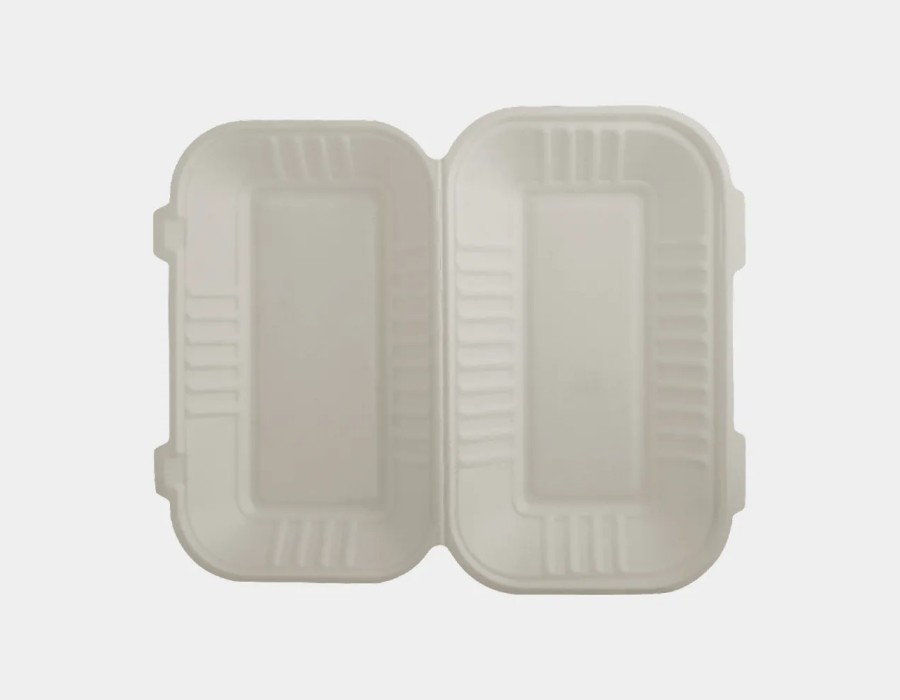As the impact of plastic waste on our planet becomes increasingly evident, consumers and businesses are embracing eco-friendly alternatives to single-use plastic. One solution making waves in the food industry is using biodegradable food containers. These containers are changing how we approach packaging and disposal in dining, reducing waste, and fostering a new era of sustainable dining. Let’s dive into the rise of biodegradable food containers and why they are a game-changer for the environment and eco-conscious consumers.
Understanding the Environmental Impact of Traditional Food Containers
Traditional plastic food containers are notorious for their environmental impact, taking hundreds of years to break down and often releasing toxic chemicals into the environment. Unfortunately, much of this plastic waste ends up in landfills, rivers, and oceans, where it contributes to the growing issue of plastic pollution. These plastics, unable to fully decompose, instead break down into smaller microplastics, which can harm marine life and enter our food chain. This cycle of plastic waste has become a pressing issue, prompting both individuals and businesses to seek alternatives that are kinder to the planet.
What Are Biodegradable Food Containers?
Biodegradable food containers are made from natural, renewable materials designed to break down in the environment. Materials like bagasse (a byproduct of sugarcane, cornstarch, bamboo fiber, and palm leaves are commonly used for these containers. Unlike traditional plastics, which can take centuries to decompose, biodegradable containers are designed to break down within a matter of months under the right conditions, leaving behind no toxic residue.
Key Benefits of Biodegradable Food Containers
Reduced Plastic Waste
Biodegradable containers significantly reduce plastic waste. Because they break down naturally, they lessen the burden on landfills and reduce the risk of polluting waterways and oceans.
Lower Carbon Footprint
Many biodegradable containers are made from plant-based materials, which require fewer resources to produce than plastic. The production process emits fewer greenhouse gases, which helps reduce the carbon footprint of food packaging.
No Harmful Microplastics
When biodegradable containers decompose, they don’t create microplastics that linger in the environment. This is a key benefit over traditional plastics, which fragment into microplastics that persist for centuries and can harm wildlife.
Safe Composting
Many biodegradable containers are also compostable, which means they can be added to compost piles and used to enrich soil. This turns waste into a resource, creating a more circular approach to waste management.
The Demand for Biodegradable Food Containers
The rise in consumer awareness about environmental issues has driven the demand for sustainable products, and food containers are no exception. More consumers are actively seeking out restaurants and food businesses that prioritize eco-friendly practices. Biodegradable containers align with this demand, allowing businesses to cater to eco-conscious customers and enhance their brand’s sustainability credentials.
Not only are biodegradable containers attractive to environmentally aware customers, but they’re also increasingly supported by government policies. In many regions, regulations are being introduced to limit or ban single-use plastics, giving businesses a strong incentive to adopt biodegradable alternatives. By getting ahead of these regulations and transitioning to sustainable packaging options now, businesses can better position themselves for long-term success.
Are Biodegradable Containers the Future of Sustainable Dining?
While biodegradable containers are not a standalone solution to all environmental challenges, they represent a significant shift in reducing plastic waste from the food industry. With ongoing innovation, biodegradable containers are becoming more versatile and affordable, making them accessible to a broader range of businesses and customers. As the demand for sustainable dining continues to grow, biodegradable food containers will likely become a standard part of food service operations.
How You Can Support the Shift to Biodegradable Food Containers
Whether you’re a business owner or a consumer, you can help accelerate the adoption of biodegradable food containers. Here are a few ways to support the movement:
For Businesses: Consider switching to biodegradable packaging options to reduce environmental impact, attract eco-conscious customers, and comply with evolving regulations.
For Consumers: Opt for dining establishments that prioritize sustainable packaging and encourage your favorite restaurants to consider eco-friendly alternatives.
Conclusion
The rise of biodegradable food containers signals a critical step towards sustainable dining and a healthier planet. As these containers become more widely adopted, we can look forward to a significant reduction in plastic waste, a smaller carbon footprint, and a safer environment for future generations. By embracing biodegradable options, we’re not just choosing sustainable dining—we’re choosing a sustainable future.





Comments